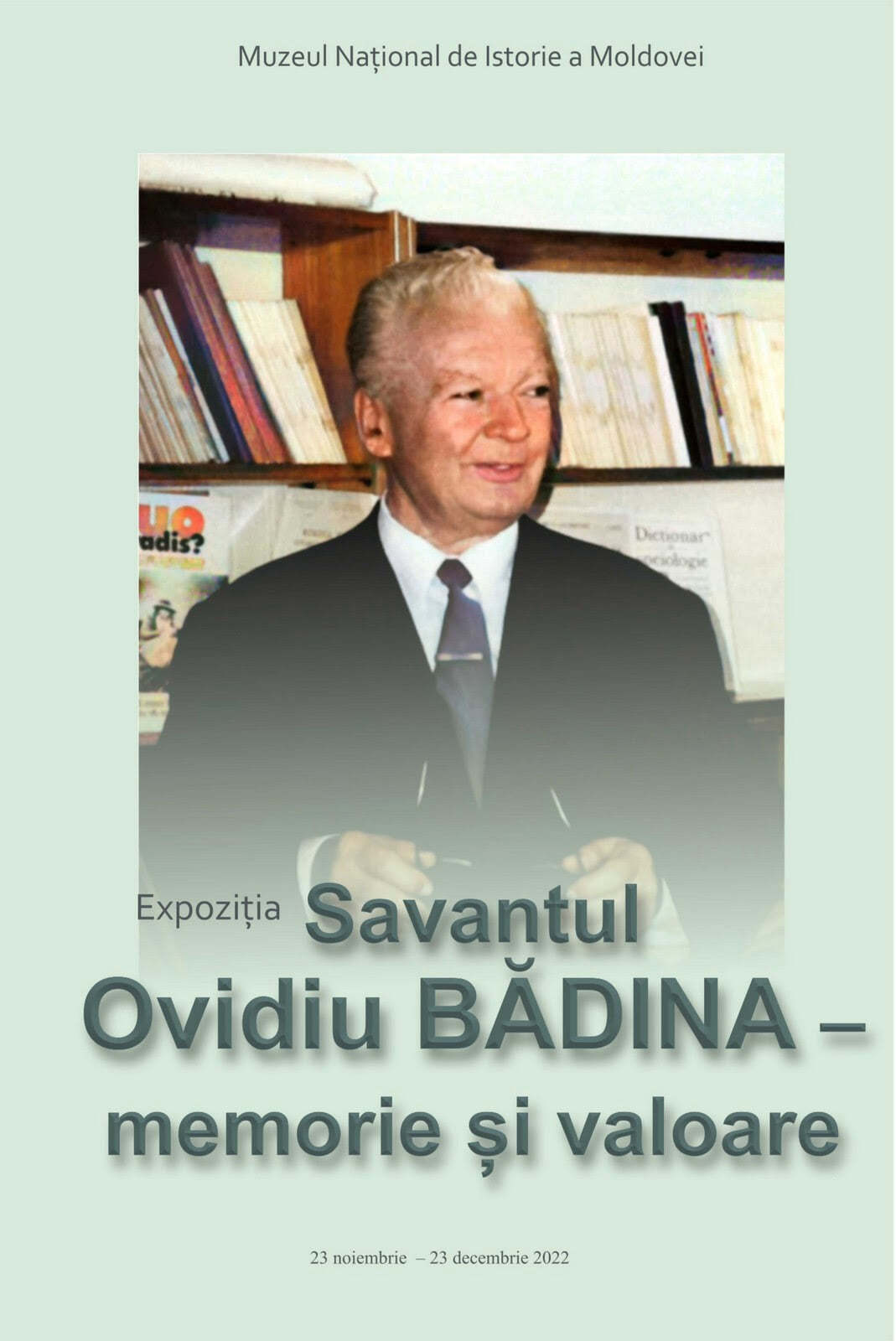 On November 23, 2022, in the upstairs hall of the National Museum of History of Moldova, was inaugurated the exhibition „The scientist Ovidiu Bădina: memory and value".
On November 23, 2022, in the upstairs hall of the National Museum of History of Moldova, was inaugurated the exhibition „The scientist Ovidiu Bădina: memory and value".
This monographic exhibition is dedicated to a prominent personality in the field of research and education - the scientist, university professor Ovidiu Bădina (1932-1999).
The exhibition project marks the 90th anniversary of the scientist's birth, and the theme of the approach addresses the scientific and didactic activity as a university professor at the Academy of Economic Studies in Bucharest and Chisinau, the sociological research carried out in the Republic of Moldova, including the monographic research of the village Cornova, the relations of professor Ovidiu Bădina with the representatives of some state and private institutions.
The exhibition displays documents, photos, books, personal objects of the teacher, which come from the museum collection, from private collections, a large part of the exhibits being presented to the public for the first time. Visitors have the opportunity - through the exhibited materials - to know important data from the scholar's biography, to discover in the exhibition original, memorial objects that belonged to Professor Ovidiu Bădina, to obtain new information about the beginning of sociological research in the Republic of Moldova, initiated by the professor Ovidiu Badina.
In Chisinau, together with Paul Braun, he contributes to the creation of the Academy of Economic Studies from the Republic of Moldova. He established the National Institute of Sociology in Chisinau, and as the director of this institution he organized and conducted numerous sociological researches in various fields of the economy, investigated and analyzed various social and political phenomena in the republic, elaborating measures for practical actions.
The exhibition „The scientist Ovidiu Bădina: memory and value" can be visited in the upstairs hall of the National Museum of History of Moldova between November 23 - December 23, 2022.
 31 August 1989 St., 121 A, MD 2012, Chisinau, Republic of Moldova
31 August 1989 St., 121 A, MD 2012, Chisinau, Republic of Moldova
























































